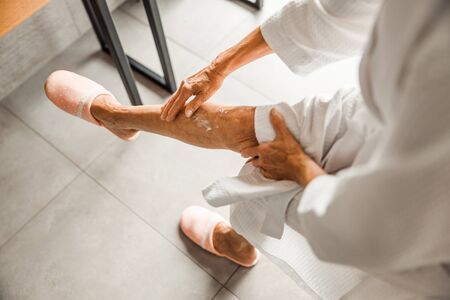Understanding Spondylitis and Its Prevalence in India
Spondylitis, also known as inflammation of the spinal joints, is a common health concern affecting millions across India. This chronic condition is characterised by pain, stiffness, and reduced mobility, often impacting daily life and work. In Indian communities, spondylitis is frequently seen among individuals who have sedentary jobs or engage in repetitive physical tasks, such as IT professionals or manual labourers. The traditional Indian lifestyle, which sometimes involves sitting cross-legged for long hours or carrying heavy loads on the head or back, can contribute to the onset and worsening of spondylitis symptoms.
Common symptoms include persistent back or neck pain, morning stiffness that eases with movement, and occasional numbness in limbs. The causes can range from genetic factors to prolonged poor posture or a lack of regular exercise. In Indian households, there may also be cultural reluctance to seek early medical intervention, relying instead on home remedies or advice from elders. This can sometimes delay effective treatment and aggravate the impact of spondylitis on an individual’s well-being.
The prevalence of spondylitis is increasing in urban areas due to changing work environments and lifestyle habits. With rising awareness about musculoskeletal health, many Indians are now turning to holistic approaches rooted in their rich cultural heritage. Traditional massage techniques, practiced for centuries in Ayurveda and other indigenous therapies, are gaining popularity as natural methods for managing spondylitis symptoms and improving quality of life.
2. Ayurvedic Approach to Massage for Spondylitis Relief
India’s ancient healing system, Ayurveda, stands as a cornerstone of traditional wellness and plays a crucial role in managing spondylitis. Rooted in holistic philosophies, Ayurveda views health as a dynamic balance between body, mind, and spirit. According to traditional Indian beliefs, an imbalance in the doshas—Vata, Pitta, and Kapha—can contribute to musculoskeletal issues like spondylitis.
Introduction to Ayurveda in Spondylitis Care
Ayurveda emphasizes individualized treatment based on one’s prakriti (constitution). For spondylitis relief, the focus is often on pacifying aggravated Vata dosha, which is believed to cause joint stiffness and pain. Traditional Indian massages or ‘Abhyanga’ use herbal oils tailored to balance the doshas and relieve discomfort.
Role of Traditional Indian Philosophies
In Ayurveda, massage is more than just physical therapy—it integrates mental relaxation and spiritual well-being. The practice aligns with core Indian cultural values of harmony and interconnectedness. Regular Ayurvedic massage helps not only in reducing pain but also in restoring overall vitality.
Holistic Benefits of Ayurvedic Massage for Spondylitis
| Ayurvedic Principle | Massage Technique | Expected Benefit |
|---|---|---|
| Vata Balancing | Warm oil massage with gentle strokes | Reduces stiffness & promotes flexibility |
| Pitta Cooling | Coconut or sandalwood oil application | Soothes inflammation & calms nerves |
| Kapha Mobilizing | Invigorating dry massage (Udvartana) | Improves circulation & reduces heaviness |
This holistic approach makes Ayurveda a popular choice among Indians seeking natural remedies for spondylitis, blending age-old wisdom with practical action for comprehensive well-being.
![]()
3. Popular Indian Massage Techniques for Spondylitis
Abhyanga: The Art of Ayurvedic Oil Massage
Abhyanga is a time-honoured Ayurvedic massage technique that holds a special place in Indian wellness culture. Performed using warm, medicated oils such as sesame or coconut oil, Abhyanga involves rhythmic, synchronised strokes along the bodys energy channels. For those suffering from spondylitis, this therapy helps enhance blood circulation, reduce inflammation around stiff joints, and soothe muscle tension in the cervical and lumbar regions. Abhyanga is often recommended as a daily ritual, with benefits extending beyond physical relief to include mental relaxation and improved sleep quality.
Potli Massage: Herbal Compress Therapy
Potli massage, also called Kizhi in South India, uses small pouches filled with therapeutic herbs like Ashwagandha, Nirgundi, and turmeric. These herbal potlis are heated and gently pressed over affected areas such as the neck, shoulders, or lower back. The heat from the potli allows herbal essences to penetrate deep into the tissues, helping to alleviate pain, relieve muscle stiffness, and improve flexibility. Potli massage is widely practiced in Kerala and is particularly effective for chronic spondylitis cases where joint mobility is compromised.
Marma Therapy: Stimulating Vital Energy Points
Marma therapy draws on ancient knowledge of vital energy points (marma points) distributed throughout the body. Skilled therapists use their fingers and palms to apply pressure on specific marma points related to spinal health and nerve function. This technique is believed to unblock energy pathways (nadis), promoting natural healing and reducing nerve-related pain common in spondylitis. Marma therapy also integrates breathing techniques and gentle stretches, making it a holistic approach that addresses both physical and energetic imbalances.
Unique Benefits of Indian Massage Therapies
The beauty of these traditional Indian therapies lies in their personalised approach. Each technique can be customised according to an individual’s dosha (body constitution), severity of symptoms, and lifestyle needs. Whether you opt for Abhyanga’s nurturing touch, Potli’s herbal warmth, or Marma’s energy balancing effects, these massages offer holistic relief that aligns with India’s rich heritage of mind-body wellness.
Common Herbal Oils and Ingredients Used in Massages
In the traditional Indian approach to spondylitis relief, a variety of herbal oils and natural ingredients are used during massage therapy. These oils, deeply rooted in Ayurveda, are specially formulated to target inflammation, pain, and stiffness associated with spondylitis. The choice of oil often depends on regional practices, individual dosha (body constitution), and specific symptoms experienced by the patient.
Mahanarayan Oil
Mahanarayan oil is one of the most widely used herbal oils for managing musculoskeletal pain in India. It contains a blend of over 50 herbs such as Ashwagandha, Bala, Shatavari, and Dashamoola. This oil is renowned for its anti-inflammatory properties and is typically warmed before application to enhance absorption and circulation. Its regular use helps reduce swelling and restore flexibility in affected areas.
Sesame Oil (Til Oil)
Sesame oil forms the base for many Ayurvedic massage blends due to its warming nature and high antioxidant content. In South India, especially Kerala, sesame oil is often infused with local medicinal herbs to enhance its effectiveness. It penetrates deeply into tissues, lubricates joints, and alleviates pain caused by spondylitis. The oil’s natural viscosity also makes it ideal for Abhyanga (full body massage) techniques.
Medicated Ghee
Medicated ghee or clarified butter processed with healing herbs is another traditional ingredient used primarily in North Indian Ayurvedic massages. Ghee acts as a carrier for herbs like turmeric, Guduchi, and Rasna. It is particularly beneficial for people with very dry or sensitive skin and those who require gentle yet effective pain management.
Comparison Table: Key Herbal Oils and Ingredients
| Herbal Oil/Ingredient | Main Herbs Infused | Key Benefits | Regional Popularity |
|---|---|---|---|
| Mahanarayan Oil | Ashwagandha, Bala, Dashamoola | Anti-inflammatory, relieves joint pain | Pan-India |
| Sesame Oil (Til Oil) | Tulsi, Neem, Ginger (regional variations) | Improves circulation, reduces muscle stiffness | South India |
| Medicated Ghee | Turmeric, Guduchi, Rasna | Nourishes tissues, soothes nerves | North India |
Local Practices and Application Methods
The preparation and application of these oils are deeply influenced by local traditions. In Kerala’s Panchakarma centers, therapists may combine warm sesame oil with fresh eucalyptus leaves for extra relief. In Rajasthan and Gujarat, medicated ghee might be gently massaged along the spine using long strokes to maximize comfort. Regardless of region, all these approaches emphasize the importance of rhythmic movements that facilitate deep penetration of herbal ingredients for optimal spondylitis relief.
5. Step-by-Step Guide to Home-Based Massage Practices
Getting Ready: Essentials for Indian Homes
Before you begin, choose a quiet space in your home—such as your bedroom or drawing room—with enough room to move comfortably. Gather basic items like coconut oil, mustard oil, or ayurvedic oils such as Mahanarayan Taila, which are popular and readily available in India. Warm the oil slightly by placing the bottle in hot water for a few minutes. Keep a clean cotton towel handy.
Step 1: Preparing the Body
Ask the person receiving the massage to sit cross-legged on a mat or lie down on a firm mattress. Ensure they wear loose, comfortable clothing or drape a thin cloth over areas not being massaged. Begin with gentle palm rubbing on the back and neck to relax the muscles and improve blood circulation.
Step 2: Applying Oil
Pour a small amount of warm oil onto your palms. Using both hands, apply the oil to the neck, shoulders, and spine area with light pressure. Use circular motions around the neck and long strokes along the spine, always moving from top to bottom to follow natural energy flow as per traditional Indian practice.
Step 3: Massage Techniques for Spondylitis Relief
A. Effleurage (Gliding Strokes)
Using open palms, gently glide along the sides of the neck down to the shoulders and upper back. Repeat this motion five times, keeping pressure moderate but comfortable.
B. Kneading (Petrissage)
With your fingers and thumbs, gently knead tight muscles around the neck and shoulders using circular motions. In Indian households, this is similar to ‘champi’ head massage but focused lower near the spine and shoulders.
C. Thumb Pressure Points
Apply mild pressure with your thumbs along both sides of the cervical spine in small circular movements. Press for two seconds at each spot before moving an inch lower. This technique is inspired by Marma therapy used in Ayurveda.
D. Gentle Tapping (Tapotement)
Use relaxed fingertips to softly tap around stiff muscles for about one minute. This helps stimulate nerves and increase local circulation—a technique familiar in traditional Indian massages.
Step 4: Cooling Down
Finish by wiping off excess oil with a warm towel. Allow the person to rest for at least 10 minutes after massage, ideally sipping lukewarm herbal tea like tulsi or ginger chai—a comforting Indian touch.
Important Safety Tips
- If pain worsens during massage, stop immediately and consult a doctor.
- Avoid strong pressure if there is swelling or inflammation.
- Do not massage directly over bones or sensitive joints.
By following these practical steps regularly—perhaps once or twice a week—you can incorporate traditional Indian massage techniques safely into your family’s wellness routine for effective spondylitis relief at home.
6. Precautions and Cultural Tips for Massage Therapy in India
Understanding the Right Timing for Massage
In India, timing plays a crucial role in the effectiveness of traditional massage therapies, especially for spondylitis relief. According to Ayurveda, it is best to avoid massages immediately after meals or late at night. Early morning or evening, when the body is relaxed and not under direct sunlight, is often preferred. During summer months, opt for lighter oils like coconut oil, while sesame oil is commonly used in winters for its warming properties.
Seasonal Preferences and Local Practices
Different regions in India have unique approaches towards massage therapies. In North India, warm herbal oils are favoured during colder months to combat stiffness associated with spondylitis. In contrast, South Indian traditions may include medicated steam as a precursor to massage for enhanced muscle relaxation. Always consult a local Ayurvedic practitioner to choose appropriate herbs and oils suited to your body type (prakriti) and current season.
Do’s: Essential Guidelines
- Ensure the massage room is clean, quiet, and free from distractions.
- Use fresh towels and properly warmed oils for each session.
- Communicate any pain or discomfort immediately to the therapist.
- Rest for at least 15-20 minutes post-massage before engaging in any strenuous activity.
Don’ts: What to Avoid
- Avoid massages if you are experiencing fever, severe inflammation, or open wounds.
- Do not undergo deep tissue massage without proper assessment from a certified therapist.
- Refrain from cold water showers immediately after the therapy; instead, use lukewarm water to maintain circulation benefits.
Safety Reminders and Cultural Sensitivities
Always respect local customs regarding modesty and privacy during massage sessions. It is customary in many parts of India for clients to wear loose cotton garments provided by the spa or clinic. Women may prefer female therapists due to cultural norms. Lastly, never self-medicate with herbal oils without guidance, as some ingredients may cause allergies or adverse reactions. By following these precautions and honouring Indian cultural practices, you can safely experience the full benefits of traditional massage techniques for spondylitis relief.


